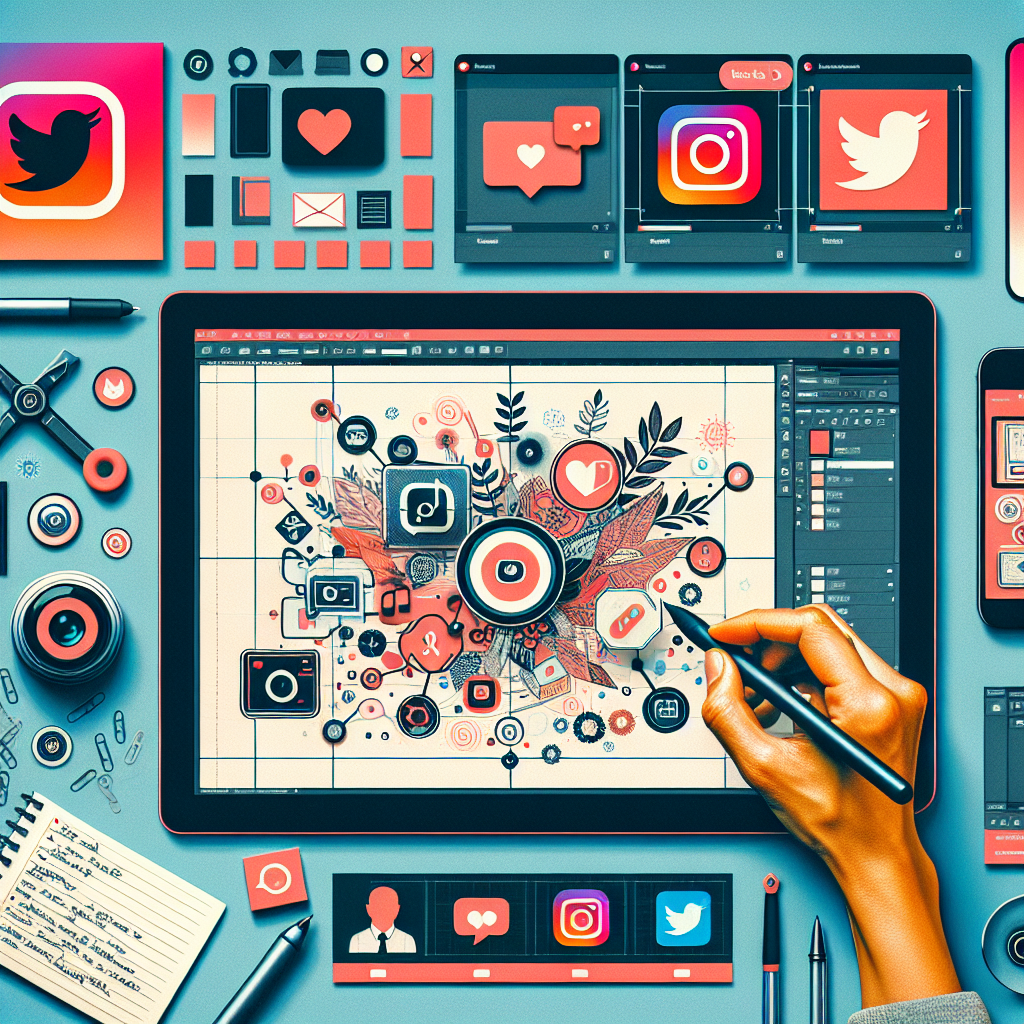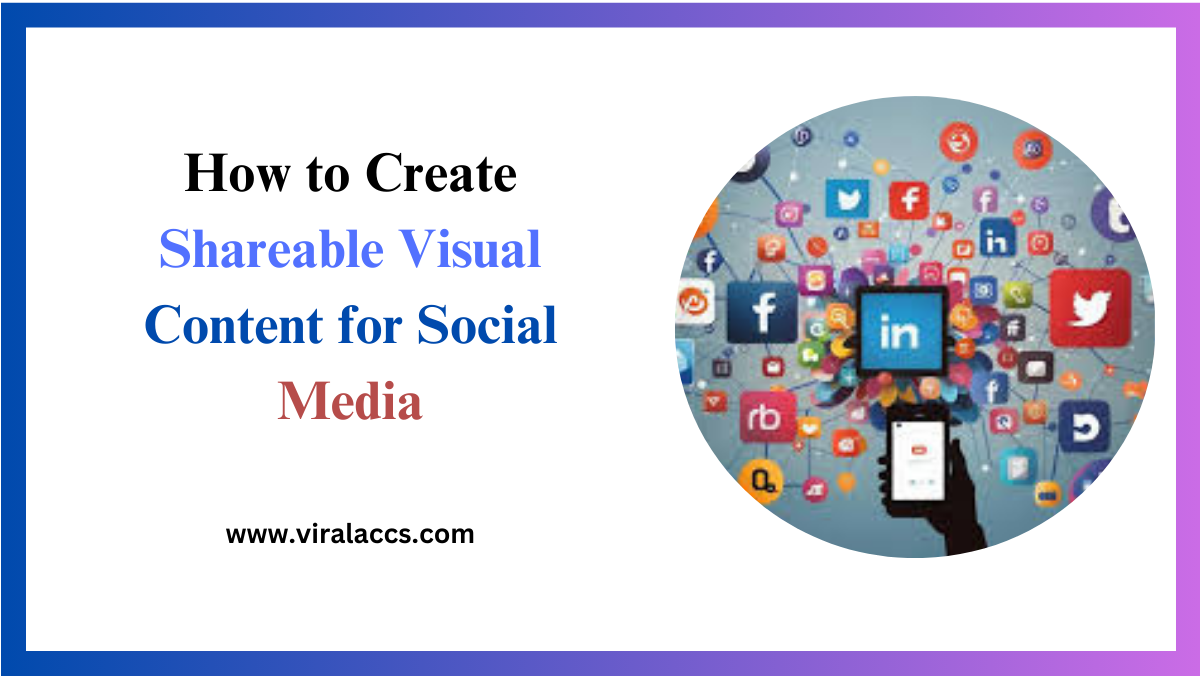Creating shareable visual content for social media is no longer just an option—it’s a necessity. With the rise of platforms like Instagram, Pinterest, and TikTok, visual content has become the primary mode of communication and engagement. But how do you create visuals that not only capture attention but are also shared widely?
In this guide, we will explore the strategies to create compelling and shareable visual content for social media. You’ll learn about the importance of visual content, different types of shareable visuals, design tools, best practices for each platform, and how to analyze performance. Let’s jump in!
The Power of Visual Content for Social Media
- Why Visual Content Matters
Visual content is king in the realm of Content for Social Media marketing. Studies show that posts with visuals get 94% more views than text-only posts. That’s because our brains process images 60,000 times faster than text. Visuals are eye-catching and easy to digest, making them perfect for quick social media interaction.
- Boosting Audience Engagement
Engagement is the lifeblood Content for Social Media success. Visual content can dramatically increase audience engagement. Images and videos tend to receive more likes, comments, and shares compared to plain text. This enhanced interaction boosts your overall reach and helps build a loyal community around your brand.
- Enhancing Brand Identity
Visual content is a powerful tool for establishing and reinforcing your brand identity. Consistent use of color schemes, fonts, and styles helps to create a recognizable brand presence. When people see your visuals, they should immediately associate them with your brand.

Types of Shareable Visuals
- Infographics
Infographics are a fantastic way to present complex information in an easily digestible format. They combine text and visuals to convey data, making it easier for the audience to understand and remember the information. Infographics are highly shareable, especially on platforms like Pinterest and LinkedIn.
- Memes and GIFs
Memes and GIFs are perfect for injecting humor and relatability into your Content for Social Media strategy. They are quick to consume, often go viral, and are great for fostering a sense of community. When done right, memes and GIFs can significantly boost interaction and audience engagement.
- Videos and Live Streams
Videos are incredibly engaging and versatile. Whether it’s a product demonstration, a tutorial, or behind-the-scenes footage, videos can captivate your audience like no other medium. Live streams add an element of immediacy and interaction, allowing you to engage with your audience in real-time.
- Carousel Posts
Carousel posts allow you to showcase multiple images or videos in a single post. This format is great for storytelling, product showcases, or sharing step-by-step guides. Carousel posts often have higher engagement rates, especially on Instagram.
- Quotes and Inspirational Posts
Sharing quotes and inspirational content can resonate deeply with your audience. These types of posts are highly shareable and can generate a lot of positive interaction. Make sure to use visually appealing designs to make your quotes stand out.
Design Tools and Resources
- Canva
Canva is a user-friendly design tool that offers a wide range of templates, graphics, and fonts. It’s perfect for creating professional-looking visuals without the need for advanced design skills. Canva’s drag-and-drop interface makes it easy to create everything from Content for Social Media posts to infographics.
- Adobe Spark
Adobe Spark is another powerful tool for creating stunning visual content. It offers a variety of templates, themes, and customization options. Adobe Spark is particularly good for creating videos and web pages, making it a versatile tool for Content for Social Media marketing.
- Piktochart
Piktochart specializes in infographics, reports, and presentations. Its intuitive design features allow you to create visually appealing infographics that can be easily shared on Content for Social Media. Piktochart’s extensive library of templates and icons makes the design process quick and efficient.
- Unsplash and Pexels
High-quality images are essential for creating shareable visual content. Unsplash and Pexels offer a vast collection of royalty-free images that you can use in your designs. These platforms provide high-resolution photos that can elevate the quality of your visual content.
Best Practices for Visuals on Each Platform
Instagram is all about aesthetics. High-quality images, cohesive color schemes, and engaging captions are key. Utilize Instagram Stories and Reels to reach a broader audience. Keep your captions concise yet engaging and make good use of hashtags to increase discoverability.
Facebook allows for a variety of content types, including images, videos, and live streams. Videos and infographics perform exceptionally well. Keep your posts engaging and encourage interaction through questions and calls to action. Facebook’s algorithm favors content that generates engagement.
Twitter is fast-paced, so visuals need to be attention-grabbing. Use images, Content for Social media GIFs, and short videos to stand out in the feed. Infographics and memes are particularly effective. Keep your tweets concise and make sure to use relevant hashtags to increase visibility.
LinkedIn is a professional network, so your visuals should reflect that. Infographics, industry reports, and professional images work well. Keep your content informative and valuable to establish thought leadership. Engaging visuals can help drive traffic to your articles and blog posts.
Pinterest is a visual discovery platform, making it perfect for infographics, how-to guides, and inspirational content. Vertical images perform best on Pinterest, so optimize your visuals accordingly. Use descriptive text overlays and keywords to make your pins more discoverable.
Analyzing Performance
- Tracking Engagement Metrics
To understand the effectiveness of your visual content, you need to track key engagement metrics. These include likes, comments, shares, and clicks. Tools like Google Analytics and social media insights can help you monitor these metrics and understand what type of content resonates with your audience.
- A/B Testing
A/B testing involves creating two versions of a visual and comparing their performance. This can help you identify what elements work best, such as colors, fonts, or imagery. Continuously testing and refining your visuals will help you create more shareable content.
- Audience Feedback
Direct feedback from your audience is invaluable. Encourage your followers to share their thoughts and suggestions. Conduct polls and surveys to gather insights on what type of visual content they prefer. Use this feedback to improve and tailor future content.
Conclusion
Creating shareable visual content for social media is both an art and a science. By understanding the importance of visual content, exploring different types of shareable visuals, utilizing design tools, following best practices for each platform, and analyzing performance, you can create visuals that captivate your audience and drive engagement.
The world of social media is fast-paced and constantly evolving. Stay ahead of the curve by continuously learning and adapting your strategies. If you’re ready to take your social media game to the next level, consider booking a consultation with one of our experts. We’re here to help you create visual content that not only stands out but also builds a strong, engaged community around your brand.








